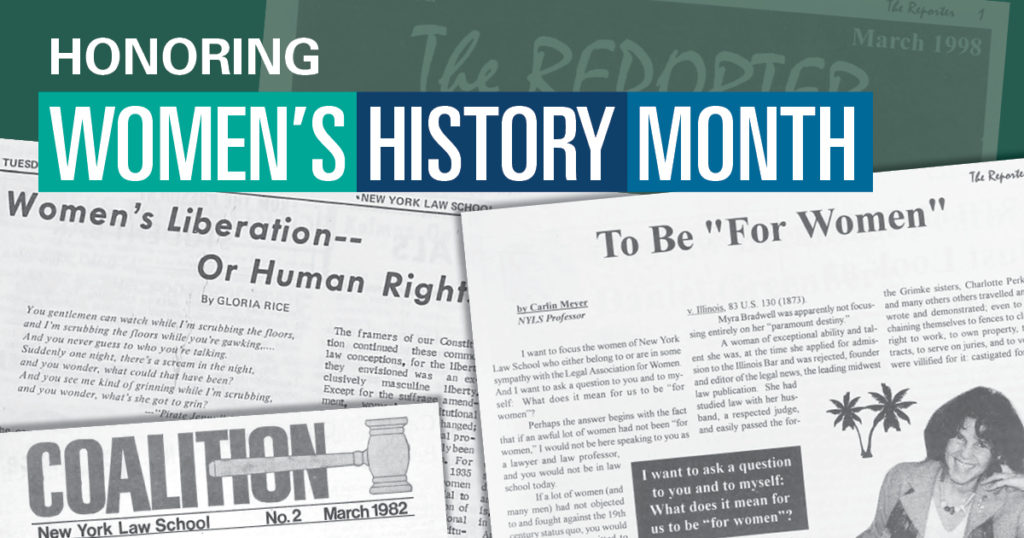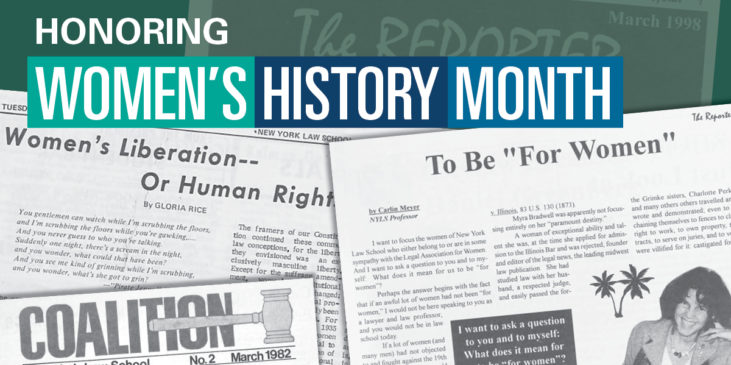
In March, we honor Women’s History Month, giving special attention to the ways in which women have shaped policy, law, and public discourse in our community and broader world. NYLS became coeducational in 1936—decades before many American law schools. Since then, our distinguished alumnae have gone on to a vast variety of roles in all areas of law.
NYLS students and faculty members have engaged with women’s contributions to the law for decades, as evidenced in archives of our past student newspapers.
As we celebrate this month and beyond, we’ve compiled a sampling of articles from our archives that highlight women and law.
“Women’s Liberation – Or Human Rights”
In a 1971 issue of the Equitas, an NYLS student newspaper, then-first year student Gloria Rice explained the Women’s Liberation movement through a legal lens, focusing on equity between men and women with special attention to intersection of race. The full article is a prescient take on feminism and engages with issues that continue to be relevant today.
“Women, Race, and Class, Angela Davis”
In a 1982 issue of Coalition, another NYLS student newspaper, then-second year student John Chellino reviewed Angela Davis’s now seminal text Women, Race, and Class. In his review, Chellino took issue with some of Davis’s points, but ultimately called the text “clarifying.” Today, Women, Race, and Class stands as a critical volume about the intersections of gender equity, race, and class, and is especially relevant to today’s conversations about intersectionality and the pushback to an exclusive brand of feminism that centers only a subset of womanhood.
“To Be ‘For Women’”
A 1998 issue of The Reporter, an NYLS student newspaper, features an article by then-professor Carlin Meyer that gives a history of women’s admission into legal practice and the movements that shaped women in law—including her own experiences as a feminist law student in the 1970s. She examined the concept of an organization aimed specifically at women, and wondered if such a specialty group is needed. She concluded with an impassioned argument in favor of such affinity spaces. Affinity spaces for women still exist inside and outside of NYLS today, and prove an invaluable tool for building community among different groups.

